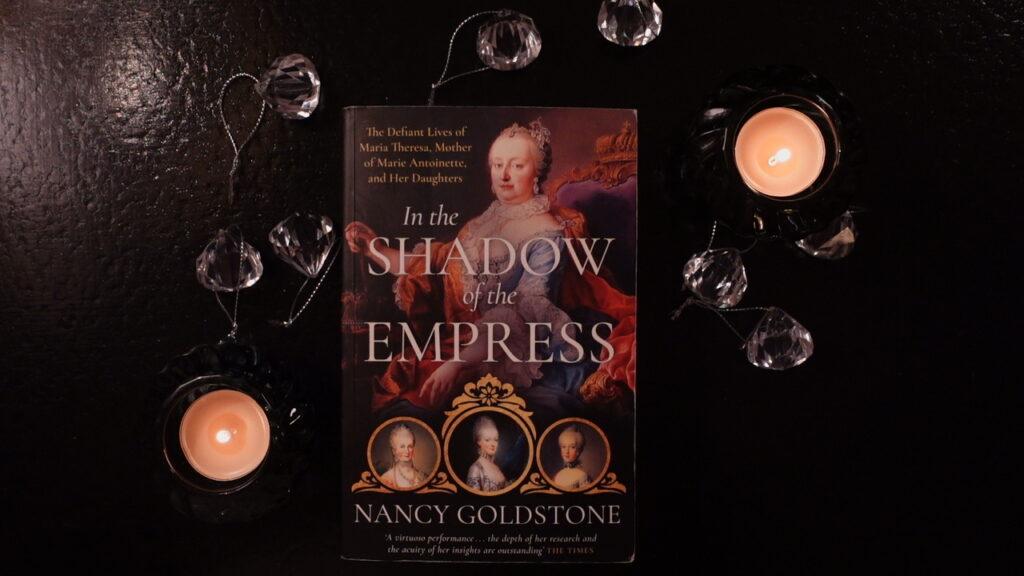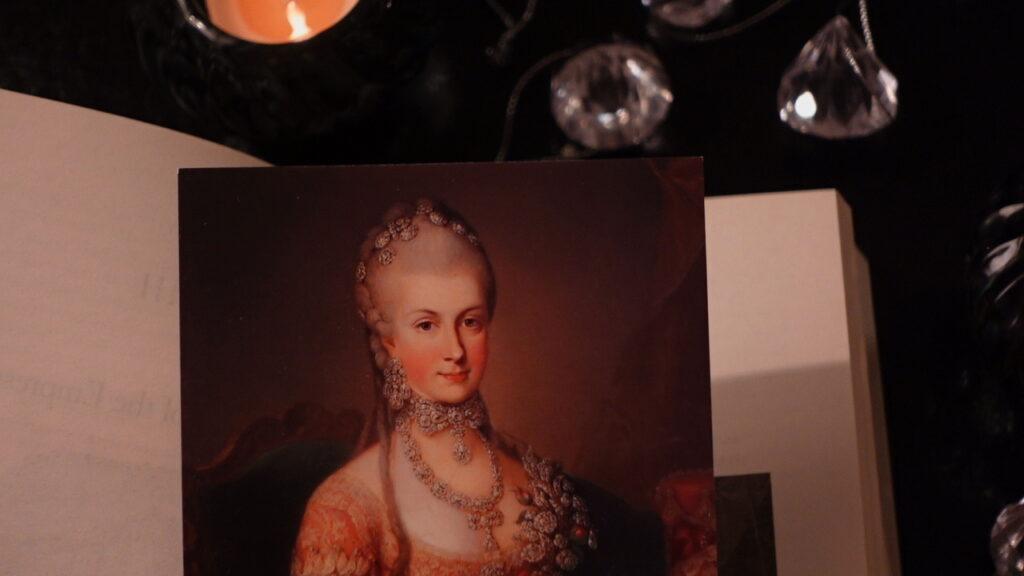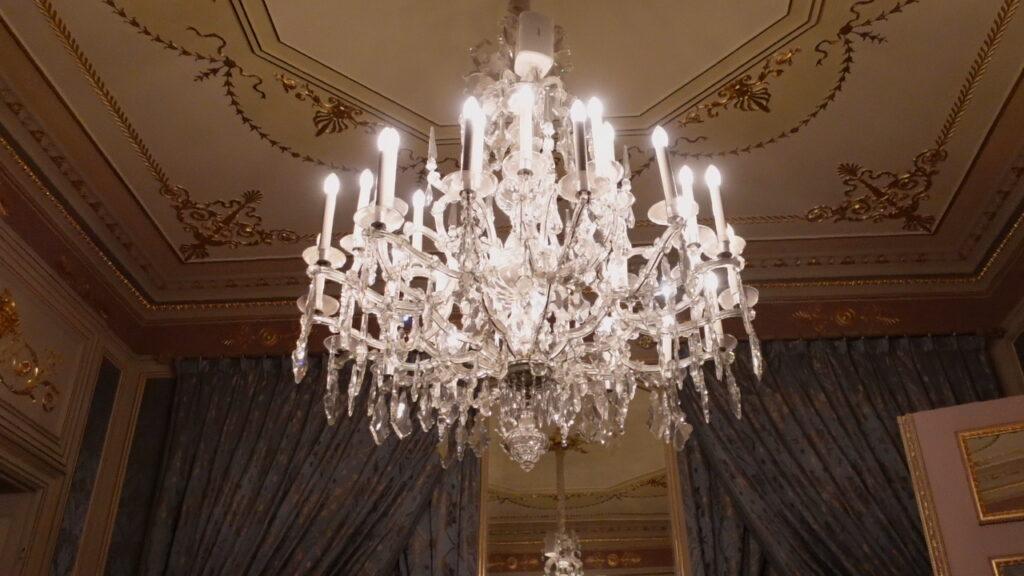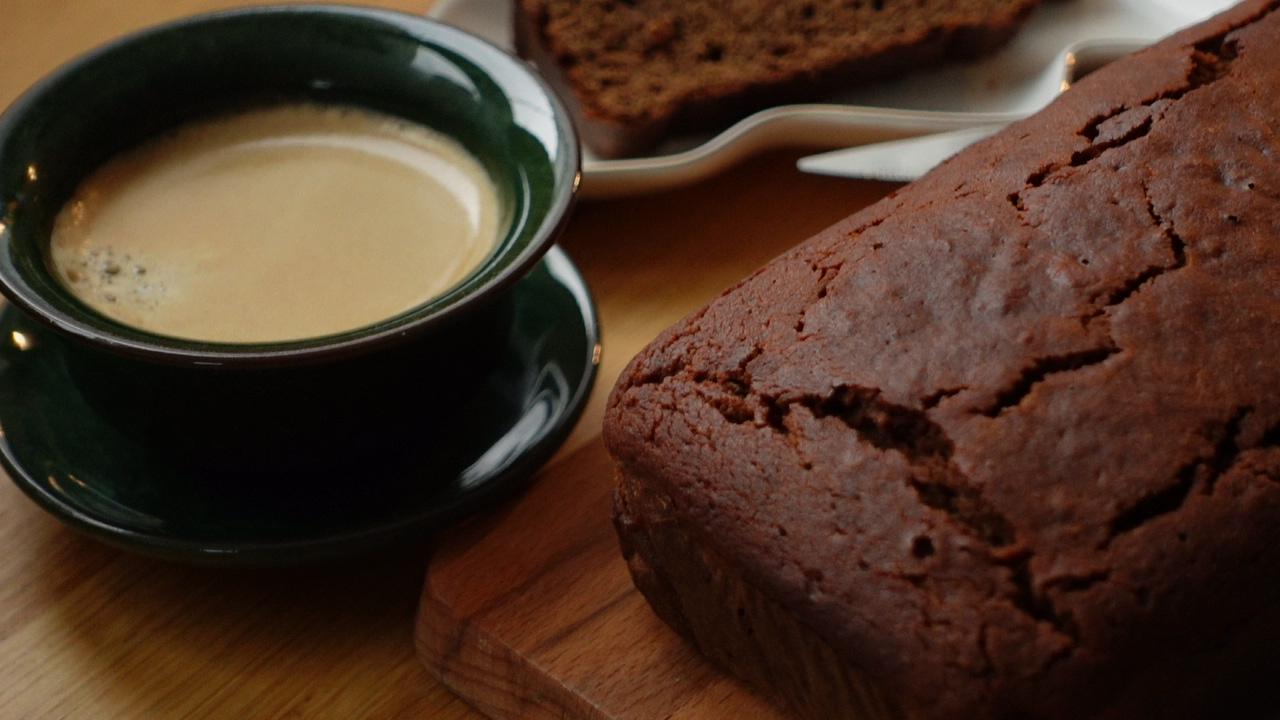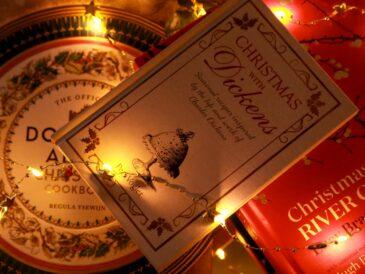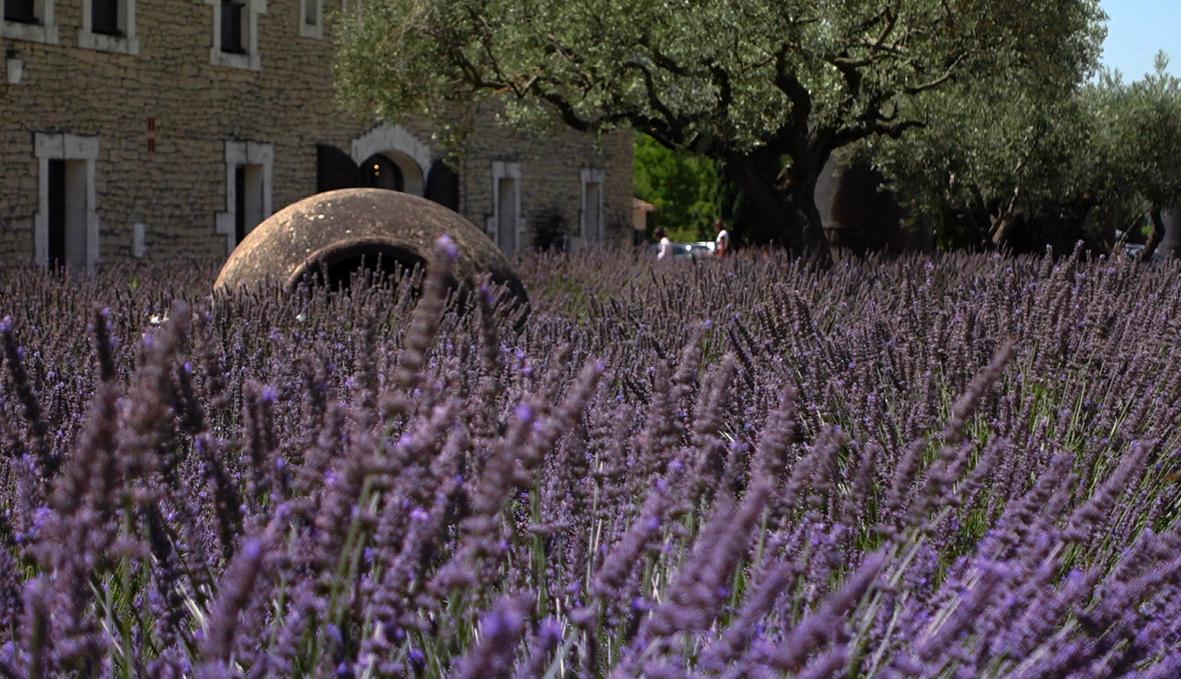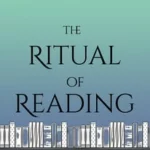« They condemn the past for its ignorance and prejudice, while knowing nothing at all about the past and not much more about the present »
― Maria Theresa of Austria, Letters of Empress Maria Theresia to her Children and Friends
Welcome to day 15 of our Austrian Advent Calendar. Today I’ll share with you my new found passion for an Austrian archduchess, and my attempt to fill in the gaps of my historical view of Austria.
Empress Maria Theresa, the powerful ruler of the Habsburg dominions in the XVIIIth century, has been a major figure in the history books of my childhood, yet as I started to prepare my Austrian adventure I realised I did not know that much about her. My choice of book to remedy the situation has been somewhat controversial.
Nancy Goldstone’s book In the shadow of the Empress sets out to tell the story of Maria Theresa and that of three of her 11 daughters (out of 16 children in total !) : Maria Christina, the Empress’ favourite, Maria Carolina, Queen of Naples and Sicily, and Marie Antoinette, Queen of France. The book has been heavily criticised for certain historical inaccuracies, or liberties that the author took in affirming certain rumours as facts. However, as I am a reader who usually keeps in mind that history is a mix of fact and subjective perspective, plus the habit of reading historical fiction for the immersive feeling rather than the precise information, I had no problem navigating the particular style of Nancy Goldstone. I actually found it very engaging and pleasant to read.
The personality of Maria Theresa is fascinating. Like any ruler of her time, not every one of her choices is commendable, and keep in mind that women who ruled were frequently judged more harshly than men. Still, so many of her actions and reforms were groundbreaking : the creation of a standing army, a central administrative agency and a ministry of finances to control all revenues. She founded the Viennese School of Medicine and promoted the principle of inoculation, saving hundreds of thousands from death by smallpox. She created a unified legal system and established the secular primary school which children of both sexes from the ages of six to twelve were required to attend. All of this, and much, much more, is to be found in Nancy Goldstone’s book.
Yet my most significant encounter while reading was not with Maria Theresa, but with her favourite daughter, archduchess Maria Christina, who I went looking for in the state rooms of the Albertina Museum. Maria Christina is an exceptional female figure of the eighteenth century : she married for love, unlike her other sisters, she was not sacrificed for the good of the nation in making a political alliance. Yet her role in the welfare of her people was not less important : together with her husband, Prince Albert of Saxony, she governed over Hungary then over the Austrian Netherlands, but most importantly, they started one of the largest art collections of their time.
She was of an artistic nature, so besides painting herself, she appreciated great art and surrounded herself with expert counsellors who advised them on art purchases. They were an original couple for the time, as we can gather from their letters to each other and to Maria Theresa. Happily married and faithful to each other, without any children of their own, they dedicated their lives to serving the people and to collecting art with the purpose of making it accessible to the larger public.
Their collection resides at the Albertina Museum in Vienna, viewed as a combination of the names Albert and Christina. The state rooms are resplendent, and even if Maria Christina herself never lived here, many interiors are brought from her former residences, like this exquisite Wedgwood cabinet that she envisioned for the Laken Palace in Brussels. My admiration for her has transformed into an inexplicable sense of connection. Everywhere I looked during my Viennese stay, I found signs of her presence. A delicate, attentive, strong and intelligent frequency, someone I might have known and admired in a different lifetime.
Until tomorrow, enjoy your reading and maybe, tell me what historical character you would have loved to meet in person ?

